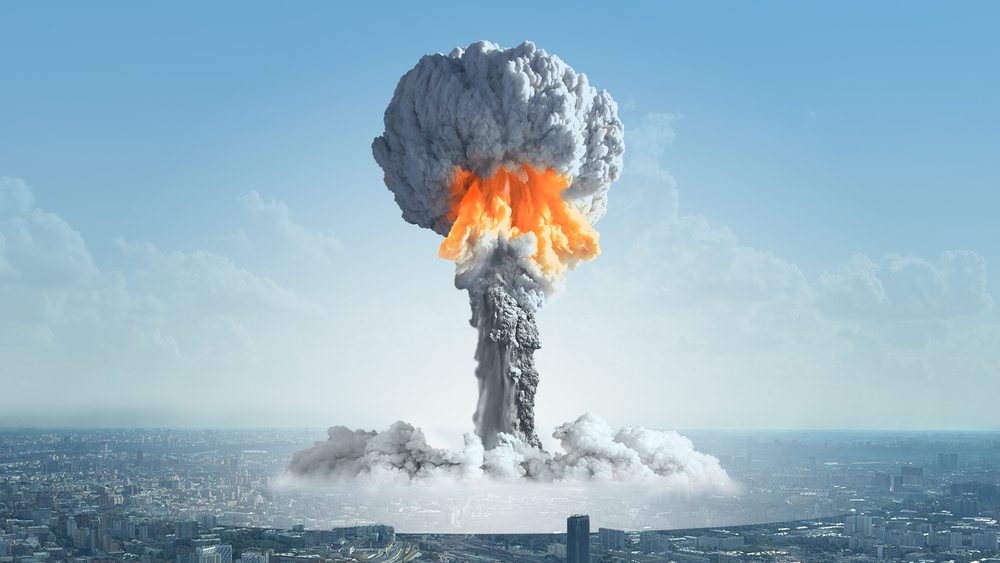News
US Nuclear Weapons Overhaul to Cost Taxpayers $1.5 TRILLION — And It Isn’t Even Lawful
Overlooked estimations predict overhauling the U.S. nuclear arsenal will cost at least $1.5 trillion — and brazenly breaches non-proliferation treaty.

An apparently widely-missed, yet phenomenally relevant, report divulges the planned 30-year revamping and modernization of aging U.S. nuclear weapons infrastructure won’t cost the incomprehensible trillion dollars officials first calculated — but one-and-a-half times the original figure — an astounding $1.5 trillion when complete.
That’s $1,500,000,000,000 — a dollar amount that, in print, is lengthier than most words in the English language — all of it, from your pockets to the manufacturers and designers of nuclear bombs, missiles, and other untenable products capable of erasing humanity, courtesy of the U.S. government.
But, even then, this knee-buckling estimation spread over thirty years ostensively relies on the State sticking to a budget, a time frame, and myriad other limits government simply isn’t known for upholding — not to mention, the massive and increasingly vocal swaths of the planet calling for complete abolishment of nuclear weapons.
Worse, as John Laforge writes for Counterpunch,
“Beyond the colossal expense, the program appears to be a flagrant violation of the Nuclear Non-Proliferation treaty.”
It was, after all, the International Campaign to Abolish Nuclear Weapons (ICAN) which just won the Nobel Peace Prize for the organization’s continued attention given the “catastrophic humanitarian consequences” of using nuclear weapons — in part, codifying a landmark, internationally-binding ban, called the Treaty on the Prohibition of Nuclear Weapons. Rather than negotiate or even come to the table with the 120 member-signatories of the United Nations, nine nuclear powers, including the U.S., Russia, Britain, and China, petulantly boycotted — leaving the treaty in limbo if and until 50 nations ratify into policy.
Originally proposed to cost a ‘mere’ trillion during the midnight hour of President Obama’s second term, nuclear modernization never sat well with the general public — the American populace having grown weary of defense corporations profiteering from the United States’ multiple, years-long conventional wars.
A report in February by the Congressional Budget Office concluded the U.S. was set to spend just $400 million for the overhaul; however, a strikingly contradictory tally came from watchdog group, Arms Control Association. Instead of a few hundred million, ACA deduced the sweeping update could be as steep as an inconceivable $1.46 trillion — roughly $500 billion more than officials have suggested — an obscene 3,650 times that calculated by CBO.
An addition of several hundred billion in taxpayer-derived funding allotted toward, specifically, a military program most Americans would not choose their income supporting, seems duly untenable in the context of the military’s ginormous $700 billion budget, which eclipses those of the next eight biggest-spending nations — combined. And that includes Washington’s purported arch rivals — who would logically comprise the greatest threat.
Proportionally, of the planet’s top military spenders, the Stockholm International Peace Research Institute found United States spends more than China, Russia, Saudi Arabia, India, France, the U.K., Japan, and Germany — a combined 35.5 percent of the world’s war machine money — where the U.S. encompasses 36 percent.
Despite recent gripes from Congress members over a supposed depletion in military spending, the Armed Forces aren’t exactly in dire straits. ACA lampooned the Trump administration in August — although the group would have done the same for anyone in office with this plan — for burning money where savings would be prudent:
“The U.S. military has upgraded and refurbished nearly all of its existing strategic and tactical delivery systems and the warheads they carry to last well beyond their originally planned service life and is now in the early stages of replacing many of these aging systems with new systems. Though decades old, these modernized forces are more capable than the originals and the new systems will include additional capability upgrades. The current and planned U.S. investment in nuclear forces is unrivaled by any other nuclear power.
“Gen. Paul Selva, the Vice Chairman of the Joint Chiefs of Staff, noted in testimony to the House Armed Services Committee in March 2017 that while Russia and China continue to modernize their nuclear forces, ‘we [the United States] do have a qualitative advantage.’ Similarly, Gen. John Hyten, the Commander of U.S. Strategic Command, told the Senate Armed Services Committee in April 2017, ‘the thing about deterrent capability is it doesn’t matter how old [it is].’ What matters is ‘whether it works.’”
With war writ large in the official goal of fighting nebulous terrorism, it cannot come as a shock when politicians and top military brass salivate over a compliant administration — but, with the constant clamor of war drums over North Korea — this behemoth budget and officials’ dreams of technologically-advanced nukes could swiftly devolve beyond simple bells and whistles.
Overhauling the nuclear arsenal is, in many senses, as useless as gilding the American Empire’s rotting coffin.
(Image credit: Shuttershock)
Typos, corrections and/or news tips? Email us at Contact@TheMindUnleashed.com
